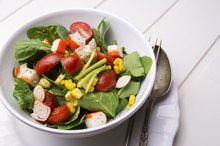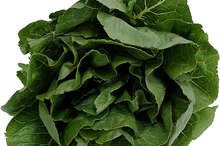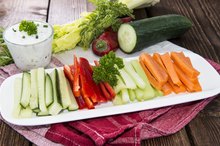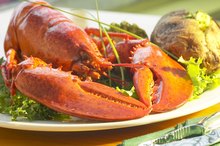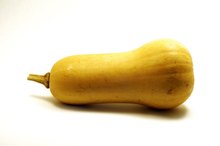What does fact checked mean?
At Healthfully, we strive to deliver objective content that is accurate and up-to-date. Our team periodically reviews articles in order to ensure content quality. The sources cited below consist of evidence from peer-reviewed journals, prominent medical organizations, academic associations, and government data.
The information contained on this site is for informational purposes only, and should not be used as a substitute for the advice of a professional health care provider. Please check with the appropriate physician regarding health questions and concerns. Although we strive to deliver accurate and up-to-date information, no guarantee to that effect is made.
Nutrition in Spinach Pie
You don't have to be Popeye to eat your spinach. This vegetable provides many benefits, and using it to make spinach pie provides you with a tasty option for lunch or dinner. This pie, which combines spinach and other vegetables in either a typical pie crust or phyllo dough, is high in nutrition -- it contains vitamins and minerals as well as macronutrients while remaining low in fat.
Tips
Spinach Pie has 199 Calories and 6.62 g of Protein per 100 gram serving according to the nutrition facts provided by the USDA Food Composition Database.
Calories and Fat
One serving of one brand of spinach pie -- 1/4 of the total pie -- contains 240 calories. You also take in 4 grams of fat, which is only a small portion of the suggested limit for daily fat intake: 20 to 35 grams. Keeping fat intake to a within this range may positively influence your cholesterol levels. Of the fat in a serving of spinach pie, 3 grams are saturated, the type of fat that contributes to heart disease. The calories and fat in a serving of spinach pie vary from brand to brand, depending on the ingredients used and the ratio of filling to crust.
- One serving of one brand of spinach pie -- 1/4 of the total pie -- contains 240 calories.
- You also take in 4 grams of fat, which is only a small portion of the suggested limit for daily fat intake: 20 to 35 grams.
Carbohydrates and Protein
Raw Spinach & Depleted Calcium
Learn More
Spinach pie provides both carbohydrates and protein, macronutrients that find use as energy providers. One serving provides 37 grams of carbohydrates, an amount that satisfies a considerable amount of your daily requirement of 130 grams. A serving contains 13 grams of protein; you need 46 to 56 grams of protein daily.
Vitamins
Eat spinach pie to increase your intake of vitamin A -- a serving of this pie satisfies 35 percent of the daily recommended intake if you follow a 2,000-calorie-a-day diet. The vitamin A in this spinach dish contributes to the health of your eyes. A serving of spinach pie also delivers 15 percent of the vitamin C you should consume each day.
- Eat spinach pie to increase your intake of vitamin A -- a serving of this pie satisfies 35 percent of the daily recommended intake if you follow a 2,000-calorie-a-day diet.
- A serving of spinach pie also delivers 15 percent of the vitamin C you should consume each day.
Minerals
How to Reverse Cataracts With Nutrition
Learn More
The mineral content of spinach pie makes it a good choice for heart and blood health. One serving of the pie contains 20 percent of the calcium you need each day 4. While calcium is known as a nutrient that bolsters bone and tooth strength, it may also play a role in maintaining heart function. You get 20 percent of your daily iron requirement, too. Iron helps make hemoglobin and myoglobin, critical components of blood.
- The mineral content of spinach pie makes it a good choice for heart and blood health.
Related Articles
References
- MyFitnessPal: Trader Joe's Spinach Pie
- MayoClinic.com; Dietary Fats: Know Which Types to Choose; February 2011
- All About Vision; Vitamin A and Beta Carotene: Eye Benefits; G. Heiting, OD; June 2011
- University of Maryland Medical Center; Calcium; March 2009
- Spinach. FoodData Central. U.S. Department of Agriculture. Updated December 6, 2019.
- Vitamin A fact sheet for health professionals. National Institutes of Health. Office of Dietary Supplements. Updated 2020.
- Nour M, Lutze SA, Grech A, Allman-Farinelli M. The relationship between vegetable intake and weight outcomes: A systematic review of cohort studies. Nutrients. 2018;10(11). doi:10.3390/nu10111626
- Vaňková K, Marková I, Jašprová J, et al. Chlorophyll-mediated changes in the redox status of pancreatic cancer cells are associated with its anticancer effects. Oxid Med Cell Longev. 2018;2018:4069167. doi:10.1155/2018/4069167
- Park SY, Na SY, Kim JH, Cho S, Lee JH. Iron plays a certain role in patterned hair loss. J Korean Med Sci. 2013;28(6):934-8. doi: 10.3346/jkms.2013.28.6.934
- Iron fact sheet for health professionals. National Institutes of Health. Office of Dietary Supplements. Updated 2019.
- Vitamin K fact sheet for health professionals. National Institutes of Health. Office of Dietary Supplements. Updated 2020.
- Food allergy overview. American Academy of Allergy, Asthma & Immunology. Updated 2020.
- Park JN, Lee JS, Noh MY, Sung MK. Association between usual vitamin K intake and anticoagulation in patients under warfarin therapy. Clin Nutr Res. 2015;4(4):235-41. doi:10.7762/cnr.2015.4.4.235
- Pendick D. 5 steps for preventing kidney stones. Harvard Health Publishing. Harvard Medical School. Updated 2013.
- Spinach. University of Illinois Extension. Watch Your Garden Grow. Updated 2020.
- Colorado spinach. Colorado Farm to Table. Colorado State University Extension. Updated 2017.
- Vegetable blanching directions and times for home freezer storage. The University of Minnesota Extension. Updated 2018.
Resources
Writer Bio
Nicki Wolf has been writing health and human interest articles since 1986. Her work has been published at various cooking and nutrition websites. Wolf has an extensive background in medical/nutrition writing and online content development in the nonprofit arena. She graduated with a Bachelor of Arts in English from Temple University.
